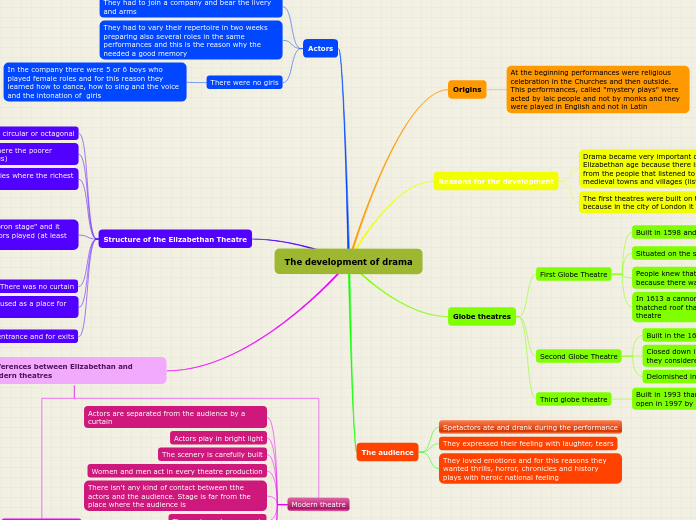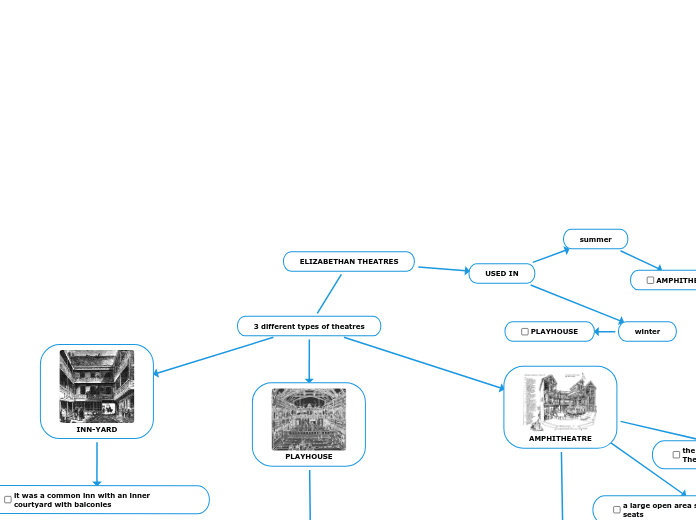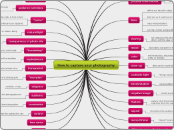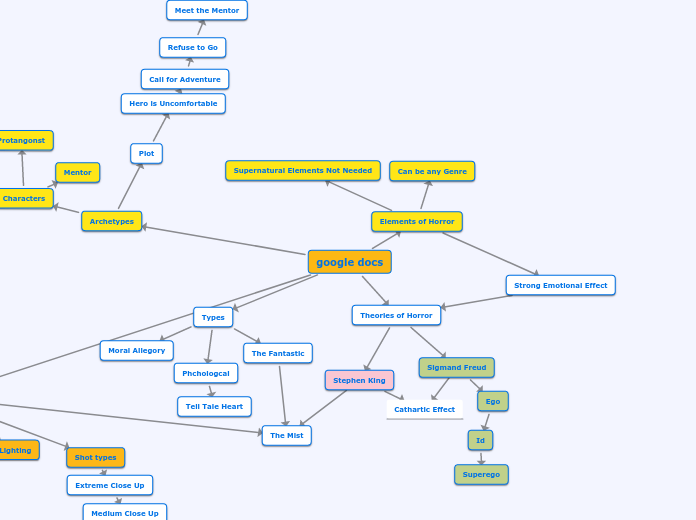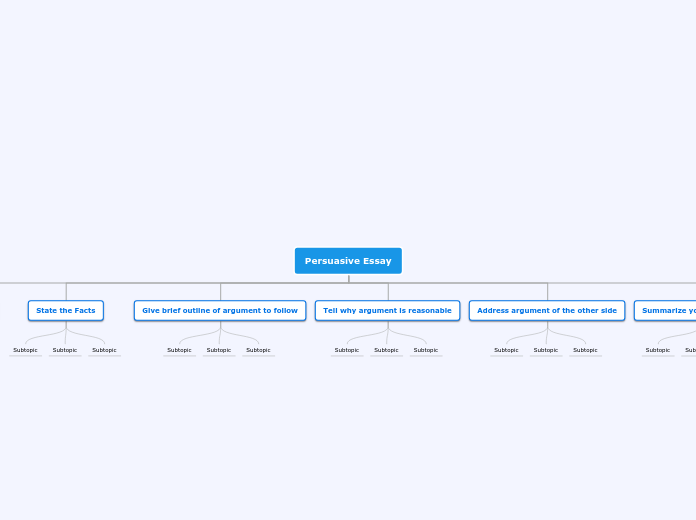The development of drama
Differences between Elizabethan and modern theatres
Modern theatre
There are a lot of technological devices: microphones, stage lights and music played by the radio
It's not permitted to eat anything in the theatres
Today going to the theatre is a formal event because tickets are expensive
The seats cost very much
There isn't any kind of contact between tthe actors and the audience. Stage is far from the place where the audience is
Women and men act in every theatre production
The scenery is carefully built
Actors play in bright light
Actors are separated from the audience by a curtain
Elizabethan theatres
Special effect were very rare: there was a trap door for apparations and there was music played by musicians
People could eat and drink and if the play was not good, the audience started to thrown everything
Everyone could see a play in the theatre because it was cheap
The seats were cheaper
There was much more interactions from the audience because people stood very close to the stage and they felt close to the actors
Women didn't act in Shakespeare's time and female parts were acted by boys
There was no scenery. The time and the places were usully mentioned in the dialogue
The plays took place in daylight and they usually started at 2 p.m.
There was no curtain and the actors played close to the audience
Structure of the Elizabethan Theatre
There were two doors for entrance and for exits
The actor used them to go to the "tiring house" where they dressed up and where they changed their costumes
There was an "upper stage" used as a place for the musicians
There was no curtain
The stage was called the "apron stage" and it was the place where the actors played (at least 12 actors)
Behind the stage there was an "inner stage" used in Romeo and Juliet. It was important for discoveries and as tombs or an hiding place
In front of the stage there was the "trap door" used for apparitions and for burials
Over the tage there was the "shadow" (thatched roof) which protected from the rain
There were the roofed galleries where the richest people stood
One place cost two pennies
There was the yard or pit where the poorer spectators stood (groundlings)
One place cost one penny
They were circular or octagonal
Actors
There were no girls
In the company there were 5 or 6 boys who played female roles and for this reason they learned how to dance, how to sing and the voice and the intonation of girls
They had to vary their repertoire in two weeks preparing also several roles in the same performances and this is the reason why the needed a good memory
They had to join a company and bear the livery and arms
The audience
They loved emotions and for this reasons they wanted thrills, horror, chronicles and history plays with heroic national feeling
They expressed their feeling with laughter, tears
Spetactors ate and drank during the performance
Globe theatres
Third globe theatre
Built in 1993 thanks to an American actor and open in 1997 by Queen Elizabeth II
Second Globe Theatre
Delomished in 1644
Closed down in the 1642 by the puritans because they considered theatres immoral
Built in the 1614 in the same place of the first
First Globe Theatre
In 1613 a cannon used for special effects hit the thatched roof that fell and set off the fire in the theatre
People knew that theatre had a performance because there was a flag on the top
Situated on the south Bank of the River Thames
People reached the theatre crossing the river with a ferry or walking on the London Bridge
Built in 1598 and opened in 1599
Reasons for the development
The first theatres were built on the South Bank because in the city of London it was illegal
Drama became very important during Elizabethan age because there is more interest from the people that listened to the plays in the medieval towns and villages (listening > reading)
Origins
At the beginning performances were religious celebration in the Churches and then outside. This performances, called "mystery plays" were acted by laic people and not by monks and they were played in English and not in Latin
